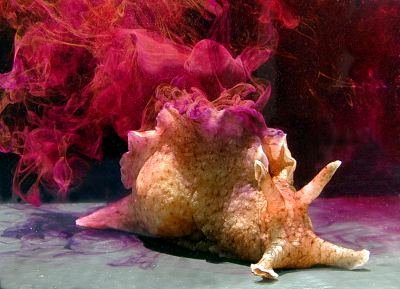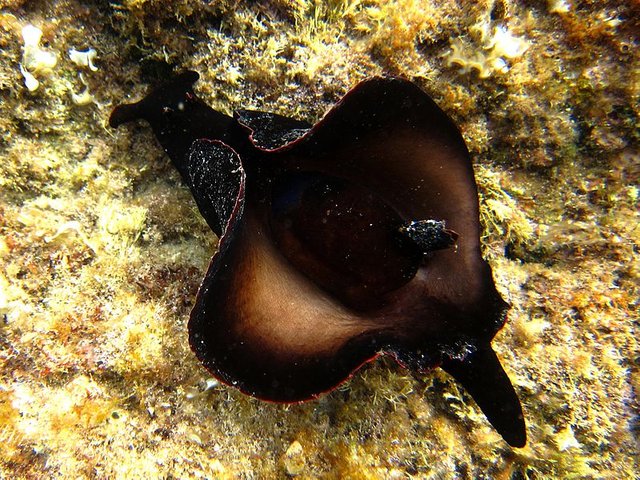Non-Associative and Associative Learning
When it comes to stuff you learn without actually putting a thought into it, there are two ways: Non-associative and associative learning. But what are those?
Fireworks, who doesn’t love them? Sparkling, colorful and loud. When you light the first of those tiny rockets, the hissing sound and loud bang that follows when it explodes might make you flinch. But after the 3rd, 4th or 5th rocket, you barely react anymore.

Why is that?
Your mind perceives the first hiss and bang as a threat and makes you react accordingly. A stress response is triggered. But if it happens again and again without harm ever coming to you, the effect fades. That’s called habituation, your brain is getting used to it.
But don’t confuse this with the adaption you experience when you’re sitting in a smelly room! There are actual changes in what happens between your neurons that are possibly permanent. They don’t have to be, the sensitivity usually returns sometime after the stimulus hasn’t been repeated again.
The exact opposite can happen too! A stimulus that isn’t actually seen as a threat can suddenly cause a strong reaction, you’re being sensitized. One single stimulus is often enough to cause this. @suesa
The important thing about non-associative learning is, that it’s always about one sensation. If someone repeatedly pokes you in the shoulder, your body will react less each time. But if the person now suddenly yells at you, you’ll be startled. So, the habituation only applies to one single stimulus - the same goes for being sensitized.
Associative learning differs from non-associative learning by … associating one thing with something else. Duh.
Yesterday, I presented you some experiments that have been used to study memory in the early days. One of those experiments was Pavlov’s dog, you’ve probably heard of it even if you didn’t read the post. Pavlov conditioned the dog(s) to associate the sound of a metronome (not a bell!) with food, which made them salivate every time they heard it.

So, this way of learning connects one stimulus (which has to come first) with something else that isn’t necessarily the usual effect of the stimulus. A dog hears a specific sound and knows he will be fed in a moment.
But dogs aren’t the only animals you can experiment with when it comes to associative learning. You don’t even need a mammal.
Why not take … a slug!

Aplysia, to be exact. This kind of slug can weigh up to 15.9 kg, although in the lab, specimens that weigh about 100-120g are used. They can be found in tropical and subtropical tide zones. If a research team wants to do experiments with them, they need to pay divers which will then pick them off the reefs. And that is really, really expensive.
But why not breed Aplysia in a lab like mice? That’s what I asked my professor. And the answer to this question lies in the way they are used in the lab.
Aplysia has the biggest neurons of all animals. In fact, these neurons are so big that they’re the largest somatic cells known in animals! Somatic cells are all cells that aren’t sperm or egg cells. So that’s really very special. How that works or why they are so big is unknown, but their size makes them perfect for research.
Put some electrodes in them to measure the electricity in them and you’re good to go!
That’s where the lab-grown versus caught in the wild factors in. A wild Aplysia is subjected to the currents. Water is pushing against it all the time from all sides. To protect its neurons, it forms a strong, protective hull. Lab-grown specimen have a much, much softer hull around the neurons. If you put your electrodes in there, you destroy them.
So if you want to do experiments like that, you need the more robust version.
But what experiments are those?
Aplysia has an interesting defense reflex. Usually, it opens up its back, so the gills are free to absorb oxygen from the water. If you startle the slug, it closes up to protect the gills. This stimulus doesn’t have to be extreme, but noticeable.

If you softly touch Aplysia with a paintbrush, it might twitch slightly but the reflex won’t be triggered. If you follow up with an electric shock, the animal quickly reacts and tries to protect itself. Do that a few times and soon just the soft touch of the paintbrush will cause Aplysia to close up in panic.
This reaction can persist for over three weeks. Now keep in mind that Aplysia only lives for about a year, then three weeks is a long time!
With all this, researchers were able to determine how this specific kind of associative learning and other things connected to memory work. All thanks to this giant slug with unbelievably big neurons.
Sources:
Nonassociative Learning - Springer
Definition Associative Learning
Nonassociative Learning - Academic Brooklyn
Aplysia gill and siphon withdrawal reflex
Lecture “Lernen und Gedächtnis - Zelluläre und molekulare Grundlagen“ by Prof. Uli Müller
Pictures were taken from pixabay.com if not stated otherwise
Today’s Suesa’s favorite is: @fknmayhem
Do you want some opinions on upvote bots? Or rather on flagging and downvoting? How about some BTC satire? If any of these things interest you, you should drop by at @fknmayhem ‘s blog. His posts are thought through and try to have a look on more than one side of the problem.
Got a scientific topic which you want to see as a story? Leave me a comment!
You want to support scientists on Steemit? You are a scientist on Steemit? Join the #steemSTEM channel on steemit.chat and connect with us!
STEM is an acronym for Science, Technology, Engineering and Math

Always an interesting write up from suesa. I just got a jotter and named it 'suesa's jotter' to make notes concerning some of your posts. Would you call that associative or non associative learning?
That's actually something completely different which I will cover in the next post!
I didn’t know anything about Aplysia until I read this. It’s crazy to think such a simple organism can remember for such a long time
Well I waited and I must say you did not disappoint! I am slightly disappointed by the slug though as the area I live it is almost customary to lick the slugs, or get tourists to, but I don't think that is a slug that one would like to lick. Although when reading that I was thinking of asking why you don't just breed them in similar conditions to that of the wild but that would potentially be the same, if not more, in terms of price. A great read all in all, definitely would recommend to others!
Don't lick the slug, the red ink stuff you see in the first picture is actually toxic to humans!
And idk, I guess the conditions can't be reproduced? There must be some reason a lab pays about 50,000€ for one year of slugs.
Well thankfully the worst we have in our area is slugs with anesthetic in their mucus! And 50,000? Maybe I should take up diving for slugs
Maybe they plant a new slug every time they pick one? Very ecologically responsible! 😉
Why can't people simulate the currents in a lab-grown environment? Drop the little guy in a wave pool and come back in a week or two. Seems like large neurons would make Aplysia a great candidate for future research.
I guess it's too complicated to simulate? Honestly, no idea, my professor couldn't give me a good explanation either.
And yeah, neurologists like Aplysia for basic research.
#TIL some slugs are associative learners.
Thanks for the fav mention! I now even made a task in my todo app to follow on on the MD check and hopefully submit an improved MD integration, complete with footnotes. Because who doesn't love awesome footnotes integration. But... will be for January.
That is one heck of a big slug! Its almost as heavy as my dog! :O
Couldnt tidal pressures be imitated in a lab for lab grown slugs? Bearing in mind, I know nothing about science lol What I found interesting is that not only does it remember and react to the stimulus, but after a while...it forgets! That is awesome! Great post!
Great post, absolutely fascinating to read.
I have never heard of 'Aplysia' before. So much of info in this post.
I enjoyed your post @suesa ! Keep publishing more informative articles.
Keep steeming. Cheers !!!
Associative Learning and Non Associative Learning....
Wonderful explanations on them both at least a person from an unrelated field can read and understand this...